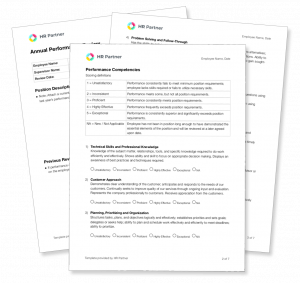The Covid-19 virus has had many impacts on individuals, but one theme we’re consistently hearing from the companies we speak with is that there is unlikely to be a “return to normal”. Most companies were required to adopt work from home arrangements due to the pandemic, but now that the initial roadblocks have been overcome, they are considering keeping a full or partial remote workforce.
This looks different for each company with some specifying which days of the week team members are required to be in the office (in part, to aid with social distancing), while others are adopting a flexible approach that lets employees decide whether to work from home, or from the office.
Of course, this has many implications for Human Resources and HR record keeping – which is the focus of our discussions with companies. The HR needs of a remote company can be quite different from those for a company operating from a single office.
If you’re facing the possibility of permanent remote working, here are a few things to consider…
Management & HR Access to Employee Records
If no-one’s in the office, you can’t just open up the filing cabinet to check an employee’s last performance review, training completed, or emergency contact. And even an installed HR system that worked fine in the office will struggle to give everyone the access they need when they’re working from home. Only an online HR system will ensure that everyone has the right access to the right information – from wherever they are.
Employee Communications
If there was ever a time that you should make sure you can quickly and easily communicate with your employees, it’s now. If there’s an outbreak or a sudden change of company direction, you might need to contact employees at a certain location, or within specific departments. An online HR system can help you do this quickly and easily.
But just as importantly, when employees are working apart from one another, they need to know who to contact and have ready access to each other’s contact information. An online employee directory is an essential tool, and an organisational chart can also be very useful.
Recruiting for Remote Positions
If you’re recruiting and you’ve decided that you don’t need people to come to your office, this is great news as it broadens the talent pool considerably. You may be able to attract a better calibre of person for the roles you’re hiring for. In these cases, you might want to consider including stages in your recruitment process that mimic the remote work environment. For example, this could include an online chat (using a chat tool), a Zoom call, and perhaps an online test.
Onboarding New Employees Remotely
Likewise, once you have new employees starting, you’ll need to consider how to effectively onboard them (remotely). This normally includes requesting certain documents from them, needing other documents read and signed, and a multitude of other things. An online HR system can help put all of these things together to make the onboarding process smooth. You can even assign tasks to other admin users to reach out and welcome the new hire.
Getting Signoff on New Policies
With so many things in flux at the moment, chances are you’ve got new policies in place, or have substantially revised your existing policies. If this is the case, you need all employees to read and sign off on these changes, which of course means that you’ll need an HR tool with an eSignatures component.
 |
Free Working from Home Policy TemplateIf you’re suddenly finding that you need a Working from Home Policy, we’ve got your back. Download this policy and customize to suit your organization. |
Of course, there are a lot more HR processes you’ll need to manage remotely. There’s also timesheets (particularly if you’re now asking employees to track their time), expense claims, time-off requests, access to company documents, asset tracking, and more. But once you’ve got a core framework in use, other pieces will start falling into place. In fact, most of our clients are realizing that there are many more benefits to working from home – which is playing a role in the decisions to continue this (even once the current conditions pass).
Let us know the HR changes you’re making to enable working from home in your company.

